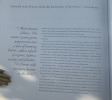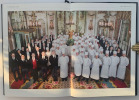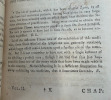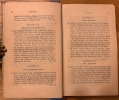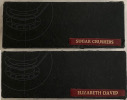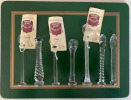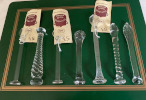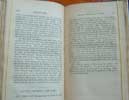Soyer's Culinary Campaign
BEING HISTORICAL REMINISCENCES OF THE LATE WAR. WITH THE PLAIN ART OF COOKERY FOR MILITARY AND CIVIL INSTITUTIONS, THE ARMY, NAVY, PUBLIC, ETC. ETC. By ALEXIS SOYER, AUTHOR OF "THE MODERN HOUSEWIFE" "SHILLING COOKERY FOR THE PEOPLE" ETC. LONDON: G.ROUTELEDGE & CO., FARRINGDON STREET. NEW YORK: 18, BEEKHAM STREET. 1857. {The right of translation is reserved.]
FIRST AND SOLE EDITION. 1857. 1fep a small tipped in inscribed letter to a mother from a soldier at the battle-front at Kadikoi. [1] Frontispiece of an aged Soyer. Title page with tissue guard. [1] 1pp Dedication to Lord Panmure. [1] 1pp Preface. On the verso of the preface is another tipped in note in the same script, relaying a story about Soyer. [1] 2pp Contents. An illustrated drawing of Soyer by H.G.Hine. [1] 1-593. [1] 1p Index to Addenda. 2pp Advertisements. 1fep. The frontispiece nice and clean. Overall very clean inside. Original blue cloth binding with bright gilt pictorial vignette on front cover and the original gilt device and text on the spine. Blind tooling also on both covers. A very interesting volume and a rare item in this condition.
- The story behind this book starts on 2 February 1855, when Soyer wrote to The Times offering to go to the Crimea at his own expense to advise on the cooking for the army there. He began by revising the diet sheets for the hospitals at Scutari and Constantinople. In two visits to Balaklava he, Florence Nightingale and the medical staff re-organised the provisioning of the hospitals; he also began to cook for the fourth division of the army. On 3 May 1857 he returned to London, and on 18 March 1858 he lectured at the United Service Institution on cooking for the army and navy. He also built a model kitchen at the Wellington Barracks, London. He died on 5 August 1858 at St. John's Wood, London and was buried on 11 August in Kensal Green cemetery. Soyer wrote many other cookery books including: Délassements Culinaires. (1845) The Gastronomic Regenerator (1846) Soyer's Charitable Cookery (1847) The Poorman's Regenerator (1848) The Modern Housewife of Menagere (1850) The Pantropheon; or, History of Food (1853) A Shilling Cookery Book for the People (1855) and lastly this volume, Soyer's Culinary Campaign (1857).



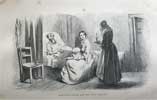


click on image to enlarge

Antiquarian category
ref number:
11242 



